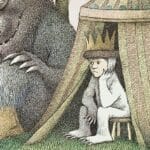Science can seem like a maze of complex ideas, but at its heart, it’s simply how we understand the world around us. However, what’s taught in school isn’t always the full picture. Sometimes, important discoveries are left out of textbooks. Whether it’s because scientists don’t fully grasp new findings, are hesitant to challenge established ideas, or shy away from uncomfortable truths, there are plenty of fascinating facts that often go unmentioned. Here are ten scientific facts that you probably didn’t learn in school!
Most of the Cells in Your Body Aren’t Even Human
Your gut isn’t just a place for digestion; it’s a thriving ecosystem. The bacteria in your gut influence everything from your cravings for sweet and salty foods to your overall mood. And here’s the kicker: you’re outnumbered! You have about ten times more bacterial cells than human cells residing within you, influencing your bodily functions and even your brain. Scientists have discovered the profound extent to which the health of our gut controls our bodies. This has led to groundbreaking procedures like fecal transplants, which have shown surprisingly positive effects on weight loss and hormone balance.
The Molecular Material Need to Create Benedict Cumberbatch Costs an Estimated $150,000
Ever wondered how much a human is worth in raw materials? The British Royal Society of Chemistry tackled this question during the 2013 Cambridge Science Festival, calculating the cost of the atomic materials needed to construct the actor Benedict Cumberbatch. By analyzing the elemental composition of a human (61% Oxygen, 10% Hydrogen, 2.6% Nitrogen, etc.) and applying it to Cumberbatch’s mass, they estimated the cost of each raw element. The result? A staggering $151,578.46 for the 59 elements required to make a human, Cumberbatch-style. This included $69,550 for 30 pounds of the purest carbon, alongside thousands more for trace elements. Labor costs, of course, were not included.
“Spontaneous Generation” Was the Prevailing Theory Among Scientists For Over a Millennium
For centuries, scientists believed in spontaneous generation, the idea that living creatures could emerge from non-living matter. According to this theory, flies and maggots would spontaneously appear on raw meat left out, and mice would materialize on cheese or bread in dark places. Aristotle was a proponent of this explanation. However, by the 1700s, it became clear that complex life forms don’t arise from dead material. It wasn’t until Louis Pasteur’s famous Swan-Neck flask experiment in 1861 that spontaneous generation was debunked, marking a significant victory for science and the development of modern germ theory.
Water Can Be “Supercooled” Below its Freezing Point
We all learn about the freezing and boiling points of water in science class. Water is a unique molecule with quirks like expanding in solid form and having molecular polarity. Pure, distilled water lacks impurities, allowing it to be “supercooled” below its freezing point. The magic happens when you introduce any impurities or air bubbles, causing the water to instantly freeze. This snap freezing effect turns a supercooled water bottle into solid ice with just a tap. Pretty cool, right?
There’s a Microscopic Animal That Can Survive in Outer Space
Enter the tardigrade, also known as the “water bear” or “moss piglet.” These eight-legged creatures possess remarkable survival abilities, utilizing hibernation processes to endure extreme conditions. Through cryobiosis, they can survive days at -200°C by reducing their metabolism to minimal levels. Anhydrobiosis allows them to survive without water by creating a glass-like sugar called trehalose, which prevents cell damage. Even more astonishingly, with anoxybiosis, tardigrades can survive extreme pressure without oxygen in places like outer space. In a 2007 experiment by the European Space Agency, 3,000 water bears survived in a space vacuum for over a week, showcasing their incredible resilience.
Nikola Tesla Had a Plan to Provide Free, Wireless Electricity to the World
Nikola Tesla, a genius ahead of his time, is renowned for his contributions to Alternating Current (A.C.) and his rivalry with Thomas Edison. With J.P. Morgan’s backing, Tesla began constructing the Wardenclyffe Tower, intended to transmit power freely across the world. Unfortunately, funding ran out, and Morgan, fearing the financial implications of free energy, ceased supporting the project. The tower was never completed and was demolished in 1917. Tesla lamented, “It is not a dream; it is a simple feat of scientific electrical engineering, only expensive—blind, faint-hearted, doubting world!”
Medical Mistakes Are the Third Leading Cause of Death in the U.S.
While the CDC lists heart disease, cancer, and accidental injuries as leading causes of death, medical mistakes are not explicitly listed. According to a John Hopkins study, medical errors are actually the third leading cause of death in the U.S., resulting in approximately 250,000 deaths each year. These errors include inadequately skilled staff, errors in judgment or care, system defects, and preventable adverse effects. Dr. Martin Makary of John Hopkins emphasizes that because medical errors are not officially recognized, they don’t receive the necessary funding and attention.
Radiometric Dating is Not 100% Accurate
Radiometric dating estimates the age of rocks based on the decay of radioactive elements. While this method is used to date objects prior to ~50,000 B.C., it relies on certain assumptions. It assumes that the decay rate of radioactive elements remains constant and that no outside forces altered the rock’s radioactive makeup. These idealized conditions are rarely the case, requiring historical context for a more accurate geological assessment. Thus, accurate dating methods need both observational science (decay rates) and historical science (initial conditions) to make reliable age estimates.
Seventy Percent of the U.S. Needs More Vitamin D
Whether you get Vitamin D from food or sunlight, you might not be getting enough. Vitamin D, which functions more like a hormone than a vitamin, is converted into calcitriol, affecting bone density, muscle growth, and immune system vitality. A meta-analysis indicates that the global average vitamin D level is around 20ng/ml, while in the U.S., approximately 70% of people have levels below 30ng/ml. Decreased outdoor activity, increased sunscreen use, and obesity are possible causes. Given its importance for immune function, a global deficiency is particularly concerning. Darker-skinned individuals in northern climates are at an even higher risk of deficiency.
Incandescent Light Bulbs Made a Century Ago Lasted Much Longer Than They Do Today
Have you heard of the Phoebus Cartel? This group introduced “planned obsolescence” by designing products to fail early, forcing consumers to buy replacements. In 1924, leading light bulb manufacturers formed the Swiss corporation, the Phoebus Cartel, to fix prices and limit competition. They engineered bulbs with a shorter lifespan, reducing it from 2,500 hours or more to an average of 1,000 hours. This practice continues to influence light bulb production a century later.
So, what did you think? Were you surprised by any of these facts? Let us know in the comments below!










